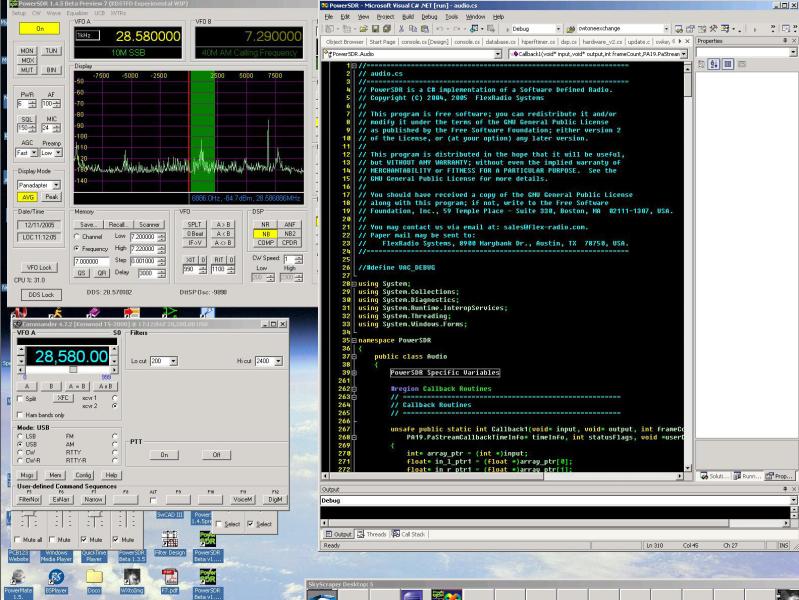
This page shows what I'm seeing in the neighborhood of 28.500 MHz on my SDR 1000. I'm not convinced these are all generated by the DDS.
While looking into this it became apparent that the SDR 1000 was hearing the computer to some degree as what I was hearing from the radio was clearly dependent on what was on the computer displays. Displays with a lot of text displayed on them seemed to be the nosiest. A screen shot of a noisy display and the resulting panadapter display is below:

A quieter screen looks like
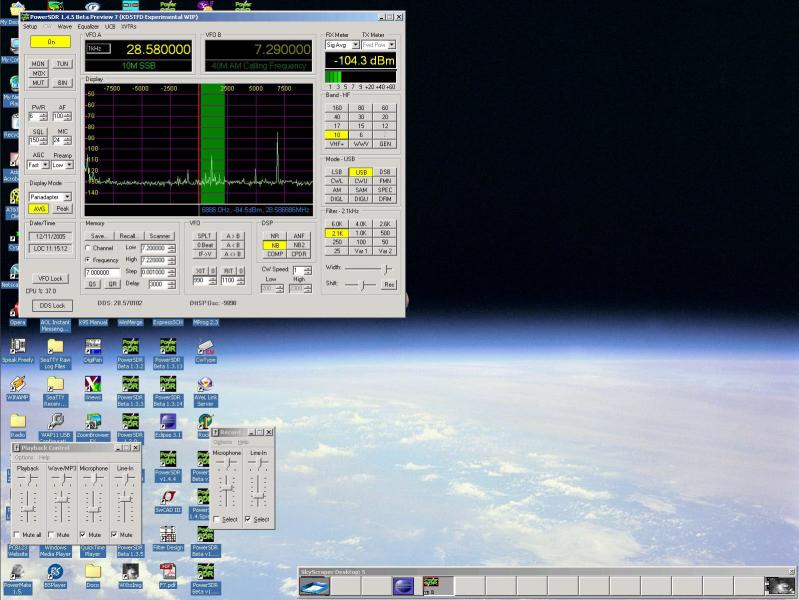
Close-ups of the panadapter for the two screen above are:
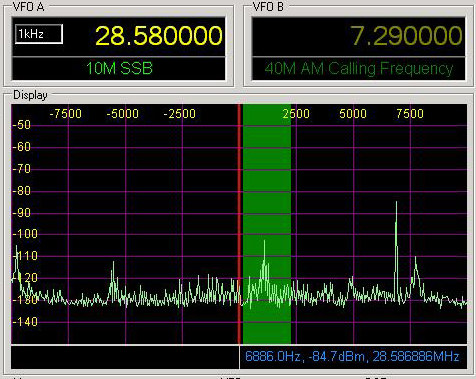 |
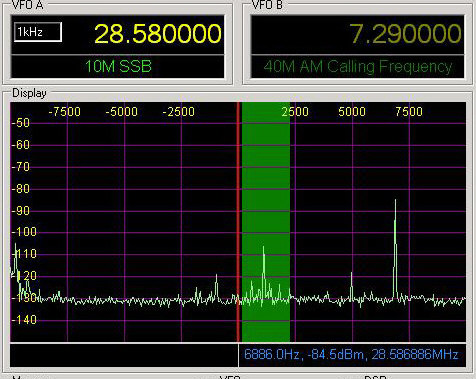 |
| Noisy Screen | Quiet Screen |
Clearly the radio is hearing the computer display above, but still that's not all that is going on. Both cases are showing a nasty spike at about 28.580700 or so. When listening on another radio in the shack (a Kenwood TS 2000), with the SDR 1000 powered off I also hear the computer display and the nasty spike 28.580700, so I'm not convinced the spike at 28.580700 is generated by the DDS or the SDR 1000 hardware.
The current PowerSDR spur reducing tuning algorithm generally tunes about 11.025 kHz below frequency of interest. It actually tunes to the closest spur optimized point and then adjusts the software oscillator in the DttSP DSP code to do the final tuning. This results in a DttSP oscillator that ranges over about -9 khz to -12 khz or so. (Frequencies are negative, as we're plying with complex I/Q sigs here).
When using PowerSDR with a Soft Rock 40 one does not have a DDS to tune, it's a single frequency crystal controlled oscillator, so we range the DttSP oscillator over the full +/- 24 khz tuning range. I've modified PowerSDR to provide a DDS Lock function that lets me lock the DDS frequency and then do all my tuning with the DttSP software oscillator. This proves to be an interesting configuration to look at spur dodging algorithms.
Below are some screen shots of tuning 28.582660 with different DDS and DttSP oscillator combinations. All of the DDS frequencies are low spur frequencies (one's selected with spur reduction turned on).
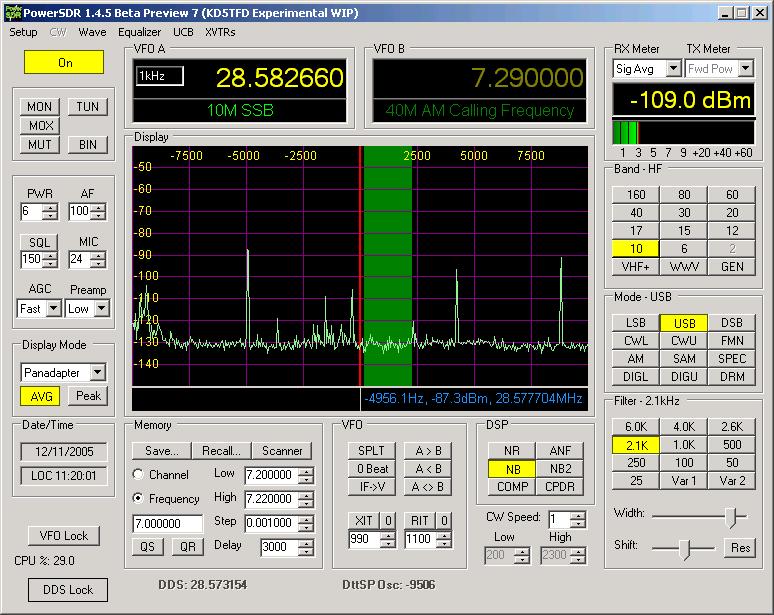
This is PowerSDR tuned to 28.52660 using the standard spur reduced tuning algorithm. At the bottom of the screen you can see what the DDS is tuned to and what the DttSP software oscillator is tuned to. Some nasty spurs showing at about -5khz, 4khz and 8 khz. A hint of DC gunk can be seen around-9.5khz.
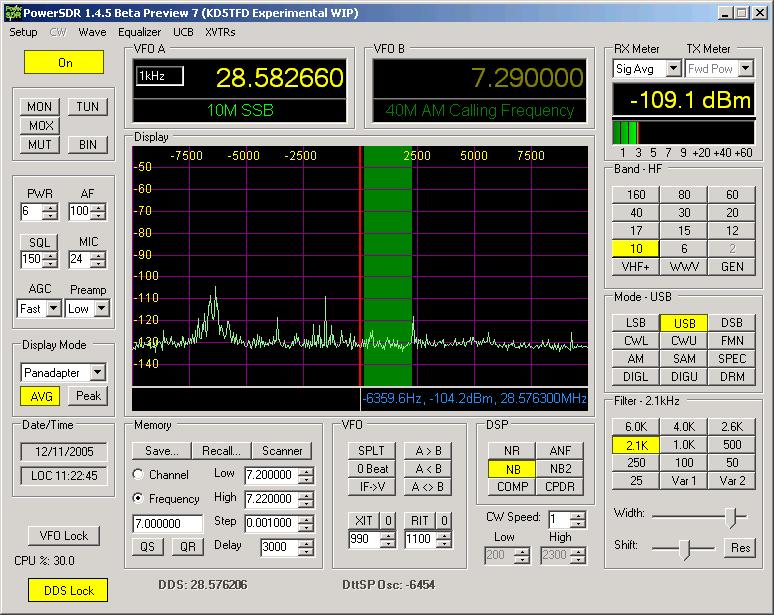
This is listening to the same 28.582660 MHz, but with the DDS locked
28.576 MHz and the DttSP oscillator set to -6454. Fewer spurs in this
one. The hump of noise to the left a bit over 6khz below the center
point is DC in the incoming audio, and shows the usual gunk at DC. The nasty spurs are gone.
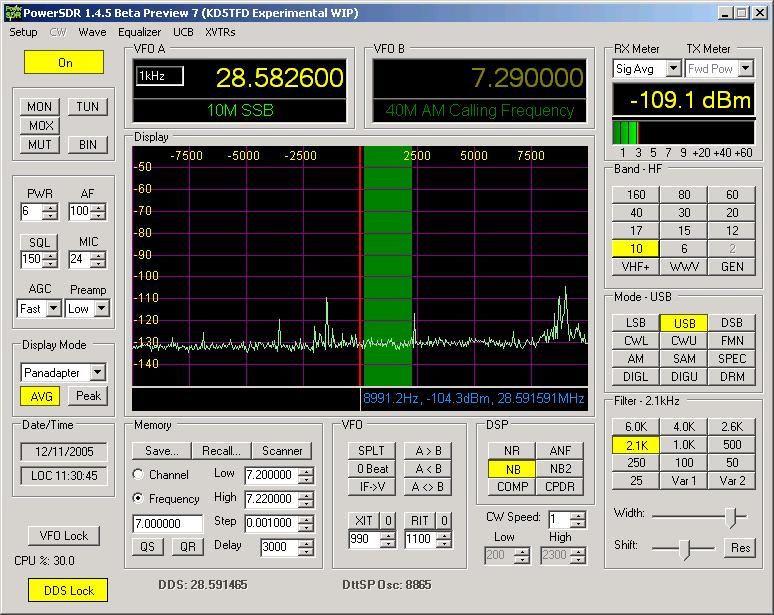
This is with the DDS tuned above the frequency of interest at 28.591 and DttSP at 8865 Khz. The DC gunk can be seen over at +8.8 khz now.
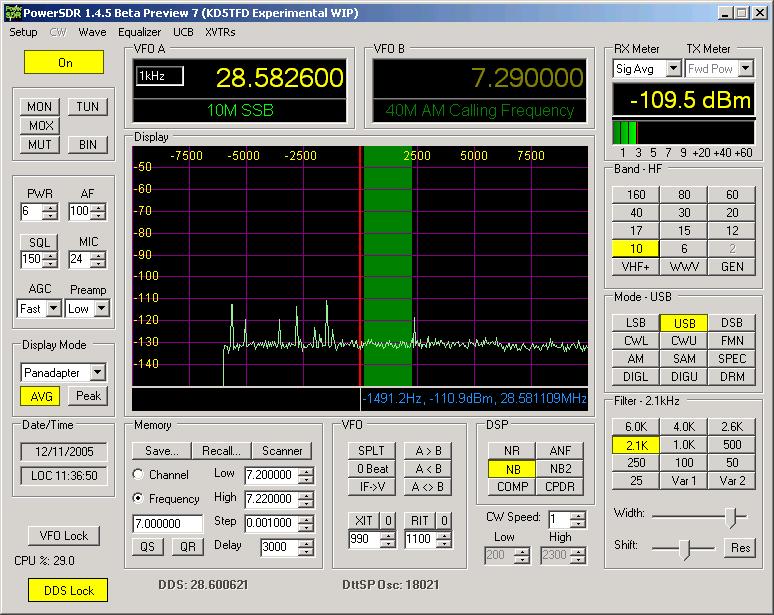
This setup shows tuning the DDS about 18 khz above the frequency of interest. Some DDS spurs are evident to the left, as well as the edge of the +/- 24 khz tuning range of the software oscillator.
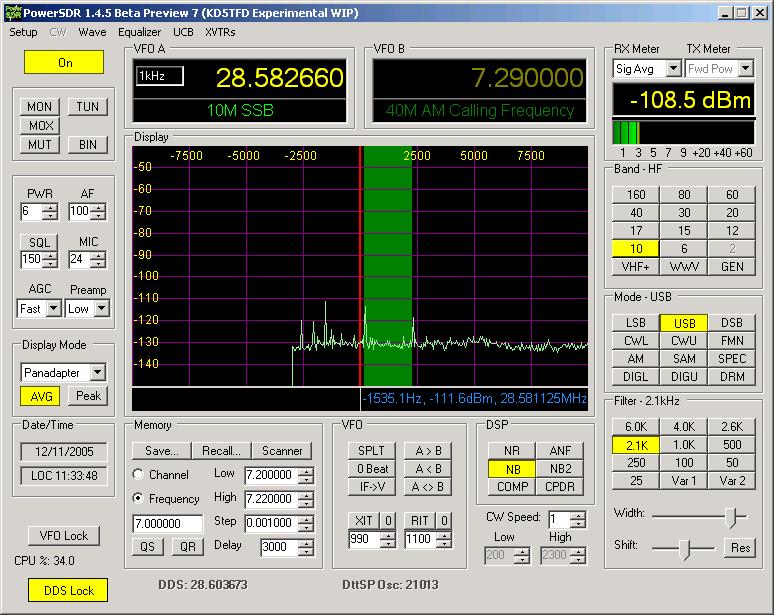
Here we've moved over another 3 khz, still have some grunge over to the left edge and a what appears to be a spur right above the tuned frequency,
I'm a rank amateur at receiver design, so take this with a grain of salt. I don't think the spikes seen in the above screen shots at 28.580700 and 28.585100 originate from the DDS as they do not move as the DDS is moved and I can hear them on another radio. I'd suspect they may originate with the computer or something else in the environment.
Perhaps what is needed is some more flexibilty on IF selection. Current tuning algorighm is to tune to a nominal -11.025 khz IF and adjust based on spur avoidance. Maybe different nominal IF''s
should be
selectable, perhpas +/- 6, 9, 12, 15, 18, 21 khz to allow for better spur dodging. An even neater possibile fix would be to automatically map out where the spurs seem to occur for different DDS settings and then to automatically pick a DDS and DttSP setting based on that data.
Comments to: Bill Tracey (kd5tfd@ewjt.com)
Last Updated: 11 December 2005
Copyright © Bill Tracey 2005